Papers by Vana Kalenderian

Journal of Archaeological Science: Reports, 2023
Rescue excavations in Beirut, Lebanon, have uncovered large burial assemblages dating to the Roma... more Rescue excavations in Beirut, Lebanon, have uncovered large burial assemblages dating to the Roman period. As the first Roman colony in the Near East, the human skeletons from Beirut provide a unique opportunity to explore migration to the city using biomolecular analyses. This study applies strontium and oxygen isotope analysis to nineteen human skeletons and establishes primary local reference values through the analysis of human and faunal dentition and the utilisation of already available environmental and botanical data from Lebanon. Two possible incomers and two definite migrants – both male and female – were identified who originated from different parts of the Empire. The comparison of isotopic data with the material culture of the graves illustrates how migrant identity is not always expressed in burial, and also how archaeological data can supplement biomolecular results in identifying the type of migration involved in a colonial setting. The results from this study contribute to our understanding of the Roman colonization of Beirut, highlight female mobility during the Roman period, and establish local human isotope ratios which can be used in future research on migration to the city and in the region.
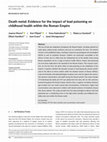
International Journal of Osteoarchaeology, 2021
The use of lead was ubiquitous throughout the Roman Empire, including material for water pipes, e... more The use of lead was ubiquitous throughout the Roman Empire, including material for water pipes, eating vessels, medicine, and even as a sweetener for wine. The toxicity of lead is well established today, resulting in long-term psychological and neurological deficits as well as metabolic diseases. Children are particularly susceptible to the effects of lead, and it is likely that the widespread use of this deadly metal among Roman populations led to a range of adverse health effects. Indeed, lead poisoning has even been implicated in the downfall of the Roman Empire. This research examines, for the first time, the direct effect of lead poisoning on the inhabitants of the Empire. It explores whether the dramatic increase in lead during this period contributed to the failure to thrive evident within the skeletal remains of Roman children. Lead concentration and paleopathological analyses were used to explore the association between lead burdens and health during the Roman period. This study includes 173 individuals (66 adults and 107 non-adults) from five sites, AD 1st–4th centuries, located throughout the Roman Empire. Results show a negative correlation between age-at-death and core tooth enamel lead concentrations. Furthermore, higher lead concentrations were observed in children with skeletal evidence of metabolic disease than those without. This study provides the first bioarcheological evidence that lead poisoning was a contributing factor to the high infant mortality and childhood morbidity rates seen within the Roman world.
BAAL , 2019
This study presents the results of an archaeological rescue excavation carried out in Ashrafieh p... more This study presents the results of an archaeological rescue excavation carried out in Ashrafieh plot no. 163. The site contained the remains of a cemetery with 21 inhumation graves dated to the Early Roman Period. The use of the plot as a burial space commenced during the late 1st century BC and continued to the 2nd century AD. Four phases were identified based on the stratigraphic sequence and dating provided by artefactual material. The report involves a discussion of the organization and layout of the graves, their spatial distribution by gender, coffin type, age group, and artefact type. An osteological assessment was also conducted for the skeletal material followed by a typological and functional study of the associate graves goods.
Public-facing Articles by Vana Kalenderian
Approaches towards archaeology and heritage are largely influenced by circumstance. The archaeolo... more Approaches towards archaeology and heritage are largely influenced by circumstance. The archaeology of the Middle East has garnered the interest of many since the beginnings of archaeological activity in the region. Yet, in an area fraught with conflict, hardships, and unrest, how is local archaeology experienced and maintained? This piece outlines the recent history of archaeology in Lebanon, amid consecutive periods of crisis. It discusses recent activities in the discipline by the Finnish Institute in the Middle East, and emphasizes the delicate balance of foreign-local research collaborations in the country.
https://lahi-itanyt.fi/nyt/archaeology-in-times-of-crisis-exploring-lebanons-ancient-past-amid-modern-challenges/
Books/Theses by Vana Kalenderian

PhD Archaeology; University of Groningen; ISBN (print): 978-94-034-2680-8 ; ISBN (electronic): 978-94-034-2681-5 , 2020
The first Roman colony in the Near East was established in the city of Berytus (modern day Beirut... more The first Roman colony in the Near East was established in the city of Berytus (modern day Beirut, Lebanon). Following its annexation into the Empire, the city underwent significant transformation. The influx of foreign colonists resulted not only in administrative and demographic changes, but also in the restructuring of a pre-existing social order. This research project examines the impact that these changes had on the mortuary customs of the city’s population. Since manners of burial are closely tied to the strongly held cultural practices and social norms of the different burying groups within the society, their analysis offers insight into the degree to which inter-cultural contact influenced these practices, and how social roles and positions were negotiated in a rapidly changing environment.
This study adopts an inter-disciplinary approach, and integrates the analysis of the material, osteological and isotopic evidence from the grave to better understand patterns of change and continuity in burial practice during the formative phase of the colony and across the Roman period. Findings shed light on customs associated with age, gender and geographic origin, as well as status and kinship. As importantly, they contribute to highlighting the ways in which different regions, cities and populations responded to Roman rule, and the complex manner in which this is expressed in the burial sphere.
MSc. Human Osteoarchaeology; University of Edinburgh, 2013
This research consists of the analysis of a Roman period burial site from the city of Berytus (mo... more This research consists of the analysis of a Roman period burial site from the city of Berytus (modern day Beirut, Lebanon). The burial ground was used over an extended period of time, from the mid-1st c. AD to the late 3rd c. AD. The study incorporates the analysis of the human skeletal remains to determine the biological makeup of the buried population, its demographic parameters, and the prevalent skeletal pathologies. The assessment of the burial practices tackles the spatial organisation of the graves, the treatment of the dead body, the burial architecture, and the grave goods.
Conference Papers/Talks by Vana Kalenderian
Conference: "The Changing and Enduring Face of the Ancient Near East: The Impact of Migration and... more Conference: "The Changing and Enduring Face of the Ancient Near East: The Impact of Migration and Imperialism through the Ages" - Finnish Institute in the Middle East & Centre of Excellence in Ancient Near Eastern Empires (ANEE), University of Helsinki - Beirut, Lebanon
Ancient and Medieval Middle East (AMME) seminar series,
Centre of Excellence in Ancient Near East... more Ancient and Medieval Middle East (AMME) seminar series,
Centre of Excellence in Ancient Near Eastern Empires (ANEE), University of Helsinki
Co-presentation with Vana Kalenderian, Annual Meeting of the Archaeological Institute of America ... more Co-presentation with Vana Kalenderian, Annual Meeting of the Archaeological Institute of America (AIA), Washington D.C.
Annual Meeting of the Archaeological Institute of America (AIA), Washington D.C. - 2020
23rd Annual Meeting of the European Association of Archaeologists (Maastricht, the Netherlands)
Groningen, The Netherlands
EAAF (Argentine Forensic Anthropology Team) 1st Course on Forensic Sciences for the Middle East a... more EAAF (Argentine Forensic Anthropology Team) 1st Course on Forensic Sciences for the Middle East and North Africa (Beirut, Lebanon)
1st ICRC Workshop on Forensic Integrated Human Identification (Beirut, Lebanon)
12th Workshop Impact of Empire - Mobility & Migration in the Roman World (Rome, Italy)
4th Annual Meeting on Dutch Archaeological Research in the Mediterranean and the Near East (Gron... more 4th Annual Meeting on Dutch Archaeological Research in the Mediterranean and the Near East (Groningen, the Netherlands)
Organized Conferences/Workshops by Vana Kalenderian
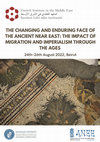
The ancient Near East witnessed the rise and fall of many empires and the movement and settlement... more The ancient Near East witnessed the rise and fall of many empires and the movement and settlement of different peoples. Each of these episodes of shifting powers and demography influenced the region and its local population in some manner and to varying degrees. Amidst political, economic and societal change, identities are reconsidered, lifeways are altered, and social hierarchies are negotiated. What were the consequences of imperialism and migration on the region and its peoples at different periods in its history? And how can we explore and interpret this impact through the archaeological record?
This workshop, organized jointly by the Finnish Institute in the Middle East (FIME) and the University of Helsinki’s Centre of Excellence in Ancient Near Eastern Empires (ANEE), brings together scholars of Near Eastern archaeology whose research centres on exploring the patterns of change and continuity within local societies, cultures and populations between the Bronze Age and the late Roman period. Different methodologies and interdisciplinary approaches to this topic of research are presented, including theoretical, material, epigraphic and scientific approaches.
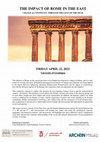
How did the different regions of the Roman East experience their incorporation into the Empire?
... more How did the different regions of the Roman East experience their incorporation into the Empire?
This conference intends to explore this question by investigating evidence from a specific archaeological context: the burials. The mortuary record reflects the beliefs, customs and norms of the burying group, and as such offers insight into local culture and social organisation. In addition, the funerary sphere was often used as a platform for the display of status, and the negotiation of power and social standing in the broader community. Within circumstances involving a new ruling entity and the emergence of local colonial elites, the examination of ancient graves sheds light on how foreign and local groups and individuals navigated this social restructuring.
Presentations will include case studies that tackle the osteological, material, epigraphic and historical evidence, and discussions will highlight how these different sources complement each other and provide a holistic understanding of the social and cultural characteristics of past populations in times of change.
Registration Link: https://docs.google.com/forms/d/e/1FAIpQLSewhp-2VrzfU_xrHP86QGv4XXlyJ6j6X_1Tsv9V235mLmc85A/viewform
We are pleased to invite you to the 3 rd Annual Meeting of the Necropoleis Research Network that ... more We are pleased to invite you to the 3 rd Annual Meeting of the Necropoleis Research Network that will take place this academic year in Beirut, Lebanon.
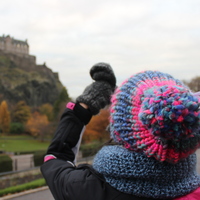
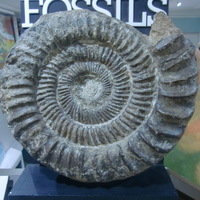

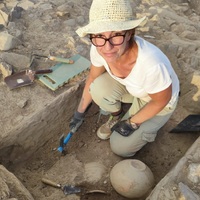





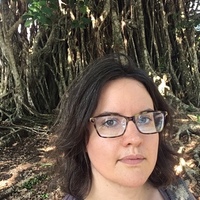

Uploads
Papers by Vana Kalenderian
Public-facing Articles by Vana Kalenderian
https://lahi-itanyt.fi/nyt/archaeology-in-times-of-crisis-exploring-lebanons-ancient-past-amid-modern-challenges/
Books/Theses by Vana Kalenderian
This study adopts an inter-disciplinary approach, and integrates the analysis of the material, osteological and isotopic evidence from the grave to better understand patterns of change and continuity in burial practice during the formative phase of the colony and across the Roman period. Findings shed light on customs associated with age, gender and geographic origin, as well as status and kinship. As importantly, they contribute to highlighting the ways in which different regions, cities and populations responded to Roman rule, and the complex manner in which this is expressed in the burial sphere.
Conference Papers/Talks by Vana Kalenderian
Centre of Excellence in Ancient Near Eastern Empires (ANEE), University of Helsinki
Organized Conferences/Workshops by Vana Kalenderian
This workshop, organized jointly by the Finnish Institute in the Middle East (FIME) and the University of Helsinki’s Centre of Excellence in Ancient Near Eastern Empires (ANEE), brings together scholars of Near Eastern archaeology whose research centres on exploring the patterns of change and continuity within local societies, cultures and populations between the Bronze Age and the late Roman period. Different methodologies and interdisciplinary approaches to this topic of research are presented, including theoretical, material, epigraphic and scientific approaches.
This conference intends to explore this question by investigating evidence from a specific archaeological context: the burials. The mortuary record reflects the beliefs, customs and norms of the burying group, and as such offers insight into local culture and social organisation. In addition, the funerary sphere was often used as a platform for the display of status, and the negotiation of power and social standing in the broader community. Within circumstances involving a new ruling entity and the emergence of local colonial elites, the examination of ancient graves sheds light on how foreign and local groups and individuals navigated this social restructuring.
Presentations will include case studies that tackle the osteological, material, epigraphic and historical evidence, and discussions will highlight how these different sources complement each other and provide a holistic understanding of the social and cultural characteristics of past populations in times of change.
Registration Link: https://docs.google.com/forms/d/e/1FAIpQLSewhp-2VrzfU_xrHP86QGv4XXlyJ6j6X_1Tsv9V235mLmc85A/viewform
https://lahi-itanyt.fi/nyt/archaeology-in-times-of-crisis-exploring-lebanons-ancient-past-amid-modern-challenges/
This study adopts an inter-disciplinary approach, and integrates the analysis of the material, osteological and isotopic evidence from the grave to better understand patterns of change and continuity in burial practice during the formative phase of the colony and across the Roman period. Findings shed light on customs associated with age, gender and geographic origin, as well as status and kinship. As importantly, they contribute to highlighting the ways in which different regions, cities and populations responded to Roman rule, and the complex manner in which this is expressed in the burial sphere.
Centre of Excellence in Ancient Near Eastern Empires (ANEE), University of Helsinki
This workshop, organized jointly by the Finnish Institute in the Middle East (FIME) and the University of Helsinki’s Centre of Excellence in Ancient Near Eastern Empires (ANEE), brings together scholars of Near Eastern archaeology whose research centres on exploring the patterns of change and continuity within local societies, cultures and populations between the Bronze Age and the late Roman period. Different methodologies and interdisciplinary approaches to this topic of research are presented, including theoretical, material, epigraphic and scientific approaches.
This conference intends to explore this question by investigating evidence from a specific archaeological context: the burials. The mortuary record reflects the beliefs, customs and norms of the burying group, and as such offers insight into local culture and social organisation. In addition, the funerary sphere was often used as a platform for the display of status, and the negotiation of power and social standing in the broader community. Within circumstances involving a new ruling entity and the emergence of local colonial elites, the examination of ancient graves sheds light on how foreign and local groups and individuals navigated this social restructuring.
Presentations will include case studies that tackle the osteological, material, epigraphic and historical evidence, and discussions will highlight how these different sources complement each other and provide a holistic understanding of the social and cultural characteristics of past populations in times of change.
Registration Link: https://docs.google.com/forms/d/e/1FAIpQLSewhp-2VrzfU_xrHP86QGv4XXlyJ6j6X_1Tsv9V235mLmc85A/viewform
This workshop invites scholars of Near Eastern archaeology whose research centres on exploring the patterns of change and continuity within local societies, cultures and populations between the Bronze Age and the late Roman period. Different methodologies and interdisciplinary approaches to this topic of research are welcome, including theoretical, material, epigraphic and scientific approaches.
Abstract Submissions:
https://www.fime.fi/call-for-papers-is-now-open-for-the-upcoming-workshop-in-beirut-the-changing-and-enduring-face-of-the-ancient-near-east-the-impact-of-migration-and-imperialism-through-the-ages/
This workshop intends to explore this question by investigating evidence from a specific archaeological context: the burials. The region in focus consists of the Near East and the Eastern Mediterranean during the period between the 1st c. BC and the 4th c. AD. Presentations will include case studies that tackle the osteological, material, epigraphic and historical evidence, and discussions will highlight how these different sources complement each other and provide a holistic understanding of the social and cultural characteristics of past populations in times of change.
We invite abstract submissions (max. 300 words) for 20-minute paper presentations and 5-minute poster presentations. Abstracts should be submitted by the 30th of January, 2022 to impactofrome@gmail.com.